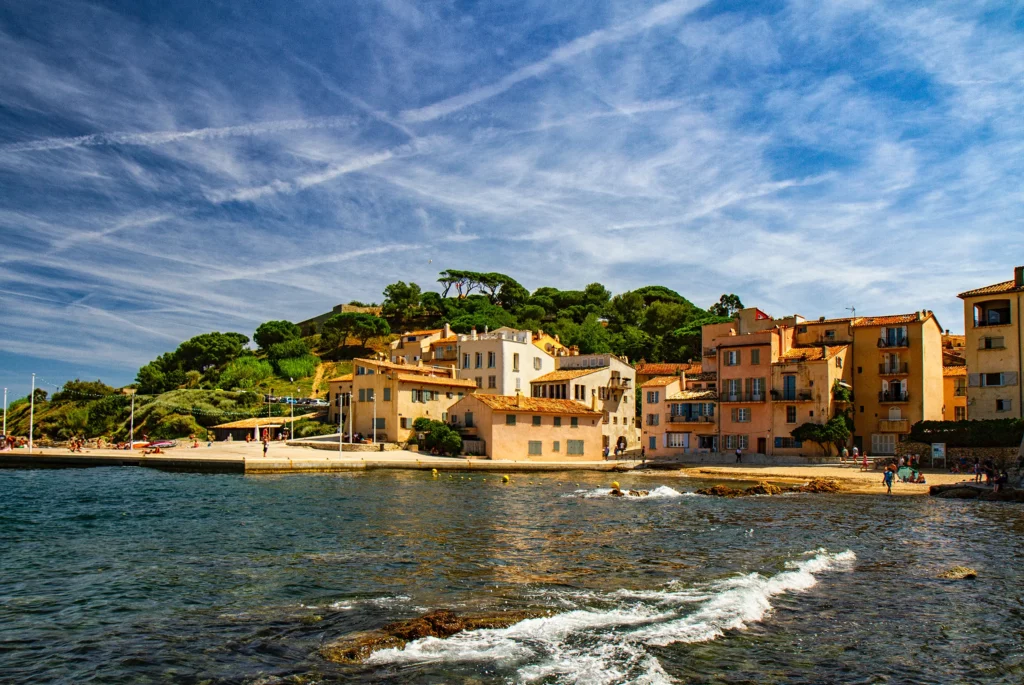
Get a new angle on Provence!
Provence cultural tours

ABBAYE DU THORONET
ABBAYE DU THORONET
Cistercian abbey built between 1160 and 1230
The “miracle” of the Cistercian abbey. Le Thoronet Abbey was built between 1160 and 1230 and is one of the three Cistercian abbeys in Provence, along with Silvacane and Sénanque. An endangered masterpiece after the French Revolution, restoration work began in 1841.
An example of contemporary architecture. The purity and simplicity of the volumes, essentially dictated by the organisation of communal life, have inspired generations of architects. Le Corbusier visited the site in 1953: “In the age of ‘raw concrete’, bless, welcome and salute such admirable encounters along the way”.
- 16 km

the Var and its Châteaux
the Var and its Châteaux
Château d’Entrecasteaux, picturesque sites in the Var with gardens designed by André Le Nôtre
Château d’Entrecasteaux is an ancient fortress built in the 11th century and remodelled in the 15th, 16th and 18th centuries. The great personalities who have lived at the Château de D’Ante-Casteaux are :
François de Grignan, son-in-law of Madame Sévigner, Admiral Bruny d’Entrecasteaux, born in 1737 at the Château d’Entrecasteaux, sent by Louis XVI to the South Pacific in search of La Pérouse, left in 1791, died of bad luck on 20 July 1793 with blood disorders and dysentery.
Jean Baptiste, Marquis d’Entrecasteaux2, born in 1761, murdered his wife in 1784. In 1974, after decades of neglect, the château was restored by British painter Hugh Ian Macgarvie-Munn, who turned parts of it into a museum before his death in 1981. Thanks to his efforts, the château was listed as a historic monument in 1988 and became a tourist attraction.
Its current owner, Alain Gayral4, has enriched the château’s collections while carrying out a meticulous restoration of the building.
- 26 km

cotignac
cotignac
A typical Provencal village
Cotignac, a typical Provencal village
This village at the foot of the tufa cliffs is unique. The houses here are particularly well cared for, restored and decorated in typical Provencal style. Those below La Cassole are a good example, while the caveman dwellings on the cliffs have a special charm. From the top of the rock, there is a magnificent panorama of the terraced hills, where olive trees, cypresses, pines, oaks and other Mediterranean vegetation against a backdrop of blue skies provide the inhabitants with a choice setting. The narrow streets and lanes leading to the squares, full of flowers and cheer, almost always respect the authenticity of the place.
- 32 km

MAISON DE LA CÉRAMIQUE
MAISON DE LA CÉRAMIQUE
Salernes
True to its centuries-old tradition, Salernes is still the region’s ceramics capital, with factories producing tiles, wall reliefs, decorative panels and other ceramic architectural elements still in operation, as well as potters, jewellery designers and other object makers, all bearing witness to an activity that began almost 4 centuries ago with clay-based craft and industrial production, but which is undoubtedly very old.
Professor Jean COURTIN’s excavations have uncovered and exhibited the oldest known artefacts in Western Europe, dating back 7,000 years. Today, around ten factories still produce traditional or modern roof tiles, and some twenty potters carry on the town’s traditional trades with unbridled creativity. The Commune of Salernes wishes to affirm the continuity of a tradition that has marked its history, and so the Terra Rossa House of Ceramics was born.
- 34 km

Typical Provencal markets
Typical Provencal markets
Looking for vegetables from local producers in Les Arcs? Hop over to the market to fill your basket with vegetables, meat, fish and even clothing, shoes and household items…
According to the season, you’ll find cabbage, broccoli, tomatoes, potatoes, melons, beans, spinach and cucumbers, plus juicy quinces, peaches, grapes, plums and figs on the market stalls.
- 3 km

LORGUES
LORGUES
This Lorgues market is held regularly every Tuesday. Generally, goods can be bought from 8am and traders start packing up around 12.30pm.
The main markets in Lorgues are located at Place d’Entrechaux, Avenue de Toulon, Boulevard Clemenceau, Rue de l’Eglise, Place de l’Eglise and Boulevard de la République, also known locally as Cours de la République. It’s in Sycamore Lane, to the west of the old centre. There are 100 stalls with merchants. It sells fruit and vegetables, farmers’ and local produce, organic and natural products, charcuterie and delicatessen products, fish and seafood, flowers and plants, as well as clothing, utensils, furniture, toys and other products…
- 20 km

SAINT-TROPEZ
SAINT-TROPEZ
Discover the village of Saint-Tropez
Famous for being frequented by hundreds of millionaires and stars during the summer months, this high plateau of international wealth remains a typically Provencal hamlet with traditional architecture.
The town has many assets: the bay is one of the most beautiful in France, and Provence seems to open out onto the Mediterranean! Nautical activities, sightseeing excursions, cultural or sporting itineraries… whatever your ambitions, you’re sure to find what you’re looking for, whether you come to discover this jewel of the Var coast.
- 37 km
The extraordinary Var area

NATURA 2000 RESERVE
NATURA 2000 RESERVE
Plaine des Maures Nature Reserve: a treasure trove of biodiversity
With a surface area of 5,276 hectares, this protected area is rich in original biodiversity and a unique ecosystem (with almost 240 protected species of flora and fauna) on the scale of the Mediterranean basin. Along with Corsica, it is also home to the last remaining wild population of Hermann’s tortoise. Around 10,000 people were present before the fire, and the nature reserve is home to two-thirds of the region’s population.
- 3 km

THE VERDON GORGES
THE VERDON GORGES
The largest canyon in Europe
The Gorges du Verdon, located on the Côte d’Azur in the Provencal Alps, are the deepest gorges in Europe. It can sometimes reach a depth of 700 metres. After rising in the Trois Evechés massif, it flows into the Durance after travelling 175 km. The canyon begins in the village of Castellane behind the Chaudanne dam and ends at the Sainte-Croix lake.
There are 5 lakes in the upper and lower canyons: Castillon, Chaudanne, Sainte-Croix, Quinson and Esparron.
The Verdon is a great playground for thrill-seekers, you can ride a Deval’Bike or simply relax, you can also hire boats on the lake (paddles, canoes, pedalos, etc.), white-water activities such as rafting, canoeing, rafting and canyoning at Riolan or Imbut.
For hiking and mountaineering enthusiasts, there’s something for everyone.
- 80 km

the sillans waterfalls
the sillans waterfalls
Sillans-la-Cascade, in the heart of Provence, offers a remarkable natural spectacle with its imposing waterfalls. The clear waters of the Verdon trace furrows through the rocks, creating a captivating dance. The waterfalls of Sillans, true aquatic treasures, cascade gracefully down from the heights, plunging into a refreshing symphony. Visitors are invited to immerse themselves in this living tableau, where the harmonious encounter between man and nature finds sublime expression. Sillans-la-Cascade leaves an indelible mark, capturing the timeless beauty of Provence.
- 40 km
Provence and its magnificent beaches

ramatuelle
ramatuelle, plage de l'escalet
Ramatuelle, a Mediterranean pearl, enchants with its beaches, particularly the Plage de l’Escalet. The fine sand stretches along the coast, offering an idyllic setting where the deep blue of the sea blends with the azure sky and green hills. The crystal-clear waters invite you to take a dip, while the coastal paths offer breathtaking panoramic views. Ramatuelle and the Escalet beach offer an unspoilt haven of peace, ideal for relaxation and contemplation, where time seems to stand still.
- 40 km

saint-raphaël
SAINT-RAPHËL ET SES CALANQUES
Saint-Raphaël, a Mediterranean jewel, reveals a unique splendour through its creeks, of which the Calanque de Maubois stands out as a preserved jewel case. Nestling between steep cliffs, this little cove offers an enchanting escape from the hustle and bustle of everyday life.
The calanque of Maubois, lined with rocks sculpted by time, reveals a breathtaking palette of colours. The deep blue waters mingle with emerald hues, creating a striking contrast with the majestic ochre cliffs. It’s a natural tableau that will appeal to lovers of the sea and tranquillity.
- 60 km

The Giens peninsula
LA PRESQU'ÎLE DE GIENS
The Giens peninsula, the jewel in the crown of the Côte d’Azur, is a natural setting of rare beauty. Surrounded by the crystal-clear waters of the Mediterranean Sea, this narrow strip of land offers a perfect marriage between the gentleness of the coastline and the richness of the surrounding nature.
The beaches that line the Giens peninsula are treasures of fine sand, caressed by the gentle waves of the Mediterranean. The beach at Almanarre, renowned for its winds that are ideal for water sports, attracts windsurfers and kitesurfers, creating a dynamic spectacle against a backdrop of azure skies.
- 80 km

porquerolles
PORQUEROLLES
Porquerolles is the largest of the Hyères islands, with villages, hotels, restaurants and shops. There are 50 km of footpaths and cycle paths on this magnificent island. Porquerolles has vast beaches of fine white sand. Porquerolles is a 50-minute boat ride from Le Lavandou. Porquerolles is the largest of the Golden Isles of Hyères.
It is 7 km long and around 3 km wide, with a surface area of 1,250 hectares. You’ll find plenty of restaurants, hotels and shops to welcome you. It is the most densely populated island. But it has managed to preserve some unspoilt landscapes that will enchant you. You’ll discover exceptional flora and fauna thanks to 51 kilometres of signposted footpaths. Four cycle routes allow you to explore the island in a single day.
- 80 km
